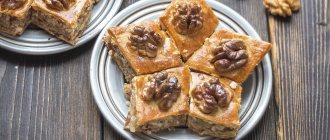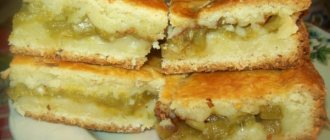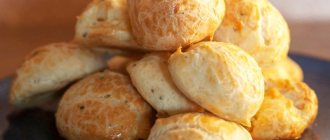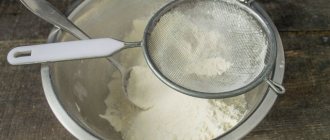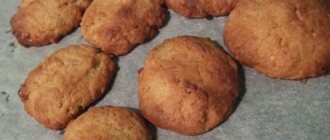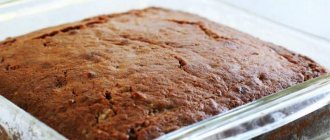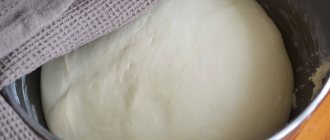10
09/10/2014 Admin
Anyone who has been to Crimea has tried this dish at least once. On the beach or in an expensive restaurant you will definitely be offered honey baklava. There are many recipes for preparing the product at home. But to taste truly delicious baklava, you need to get on a commercial vehicle and go to the wonderful peninsula. Only here they know the secrets of preparing this dish, only here the summer Crimean sun, gentle sea and warm wind will be in the recipe for sweets.
Baklava or baklava was first prepared in the 15th century in the Sultan's palace. Not only the Sultan himself was delighted with the dish, but also everyone who had to try it for more than five centuries. In addition to Crimean Tatar cuisine, baklava is a traditional dish in many Asian and some European countries. Each country prepares the sweet differently. The common thing is that the sheet of dough is cut on a baking sheet before baking, and the finished product is filled with syrup.
Baklava: what is it
Baklava is a sweet confectionery product with honey, with nuts, prepared in layers, soaked in honey filling, and consisting of layers of dough. The dough for baklava is puff pastry without yeast, filo, yeast, sour cream, or homemade baklava is made from kefir dough.
When you want to prepare a quick dessert for tea, the base is cut from thin Armenian lavash, and layers are often baked onto honey baklava from ready-made puff pastry.
Baklava recipe is a classic - a very tasty, sweet treat for the whole family. You can always enjoy the taste of the oriental dessert at home if you master the recipes for making baklava. Baklava, a puff pastry recipe is considered one of the fastest ways to prepare baklava at home.
Types of baklava
Turkish baklava (or baklava) is traditionally made from filo puff pastry. In appearance it resembles a layer cake with nuts, cut into individual baklavushkas with many layers soaked in syrup (usually sugar). Its varieties are diamonds with a shiny surface, crispy rolls, and multi-layer cakes.
Armenian baklava is not much different from Turkish baklava. The composition of the sweet originally from Armenia - walnuts, honey, sugar, butter - for filling and syrup, dough base. The dough for Armenian baklava can be prepared with yeast, without yeast or quick puff pastry; soft shortbread is suitable.
Azerbaijani baklava (or Baku baklava) is very often made with sour cream; the dough for making baklava is often used without yeast. Types of Azerbaijani baklava: Baku baklava, Ganja, tricolor Khan baklava. Delicious and aromatic layered Azerbaijani baklava.
Georgian baklava is a type of eastern baklava. In Batumi, Batumi baklava is considered the most delicious and every family prepares it for the holiday. Every Georgian housewife knows a successful recipe for real baklava, a tender, very tasty sweet pastry made from puff pastry with walnuts and honey.
Crimean baklava - baklava without any problems. To prepare Crimean brushwood at home and remember the summer spent at sea, you do not need to go to Turkey, Azerbaijan or Armenia, or delve into the recipes of national oriental cuisine.
Cooking Crimean baklava:
- Melt the butter and pour into the milk.
- Add sour cream and soda.
Stir, add flour and knead into a stiff dough, like dumplings. First add 3 cups of flour, and then during the kneading process add more as needed. Dough for making Crimean baklava - Leave the dough for 10 minutes, covering it with something.
- Divide it into several parts (I divide it into balls Ø 5cm).
- Dust the table with flour and roll out one part into a rectangle as thin as possible (preferably 1 mm).
The thinner you roll it out, the tastier the baklava will be. When rolling, add flour to prevent the dough from sticking. Rolling out the dough - Leave this layer to dry for 5-10 minutes on each side.
- Roll it up, tucking it in 4 cm at a time. If the dough sticks, sprinkle with flour.
Moisten the edge with water so that it sticks and the baklava does not fall apart when frying. If you have a thin, long rolling pin, simply roll the dough loosely onto it (wet the edge as well) and pull out the rolling pin. Rolling the dough - Cut the resulting roll into 2 cm strips at an angle of 45°.
You need to cut with a sharp knife, dipping it into flour, using a sawing motion. The edges of the dough should not stick together! Cutting the dough - Unfold the resulting pieces a little. It is advisable to shake off excess flour so that it does not burn during frying.
- Heat vegetable oil (about 0.5 l) in a deep frying pan. Drop in a few pieces at a time and fry on both sides until golden brown.
- Place on a tray lined with napkins to remove excess oil.
- At the same time, prepare the syrup. To do this, mix sugar and water and bring to a boil. Turn off the heat and add honey.
- Dip the cooled baklava into the hot syrup for 1/2-1 minute.
If you dip the hot baklava, it will become soft, but if it cools down, it will remain crispy. Baklava in syrup - Place on a tray and immediately sprinkle crushed nuts on top.
Beach baklava is ready
That's all! Sweet crispy Crimean baklava is ready! As you can see, it is not difficult to prepare it yourself, the only difficulty is rolling out and cutting the dough so that it does not stick together.
PS It’s so good that there are still wild places in Crimea where you can take a break from the city, people, computer with good company...
There is no one on this beach except seagulls:
And these are our tents visible:
PPS If you liked the recipe, to receive updates by mail about new dishes.
Calories: Not specified
Cooking time:
Not specified
In the summer, honey baklava is traded briskly on all the beaches of Crimea. Vacationers, and especially children, really like this tasty treat. I suggest you remember your summer vacation on the seaside and prepare this baklava at home. Cooking will not take much time. Crimean baklava is prepared very simply and quickly at home. My detailed recipe with step-by-step photos will help you with this. I'm sure you'll like this one too. You will need:
- sugar - 1 cup, - honey - 3 tablespoons, - water - ½ cup,
Additives:
- some nuts (any kind),
Dough:
- vodka - 10 ml., - sour cream - 2 tablespoons, - baking powder - 1.5 teaspoons, - milk - half a glass, - butter - 30 grams, - salt - 1/4 teaspoon, - flour - 0, 5 kg., - oil for frying - 300 ml.
Recipe with photos step by step:
Mix milk with melted butter. Add baking powder. Add salt. Pour in vodka and sour cream. Add sifted flour to the liquid mixture. Form the dough. Divide it into several parts. Roll out the pieces to a thickness of 1 mm. Leave to dry a little. Roll it up, making sure that the layers do not stick together. Cut the roll at an angle, being careful not to stick the layers together. Flatten the dough slightly and shake off excess flour. Heat oil for frying. Drop the dough pieces into the oil. Deep fry the baklava on both sides until browned. Place the finished baklava on a plate lined with a paper towel. This must be done to remove excess fat. Cool the dish! Pour water over sugar. Boil for a minute. Add honey and stir. Dip cold baklava into hot honey syrup. Place the finished dish in a heap on a serving plate. Brown the nuts in a dry frying pan. Sprinkle the baklava with chopped nuts. I suggest you cook something equally delicious. Honey Crimean baklava prepared according to this recipe turns out crispy, with a rich honey taste. Store it in a cool, dry place. Serve baklava with hot unsweetened drinks such as tea or coffee.
They say that this type of baklava is sold on the beaches in Crimea, which is why it is also called “Beach”. But I didn't have a chance to try it. Apparently, at the time when I was in Crimea (and this was a hundred years ago), such baklava was not yet sold.
However, the pictures on the Internet drive you crazy with their deliciousness, and many recipes are completely confusing, but I still decided to try to cook it myself, choosing and adding to my own recipe. I’ll say right away that I’m far from an expert in this matter and I don’t yet have the necessary dexterity, but the taste of baklava turned out to be excellent. I present the result of my throwing to your judgment.
For Crimean baklava we will need such products (see photo)
In a bowl, mix flour, sugar, salt and soda. Beat a large egg into the center, pour in vodka, add a spoonful of sour cream and knead the dough. Vodka helps the dough loosen; it is not noticeable in the taste. It can be replaced with any strong alcoholic drink, rum, cognac, brandy, etc.
The dough should be kneaded on the table until it stops sticking to the table and hands. If necessary, add a little flour for sprinkling. Cover the dough with a towel and leave on the table to “rest” for 10-15 minutes.
Then divide the dough into 4 equal parts. Roll out each piece of dough very thinly, preferably using almost no flour. You can only lightly “grease” the surface of the table with flour. The thinner the dough is rolled out, the more beautiful and tastier the baklava will be. You have to try, this is the most time-consuming part.
First, I decided to try it on just one piece of dough. I brushed its surface with melted butter. This is necessary so that the layers open up during frying and do not stick together. Many housewives have layers of dough sticking together and the desired pattern is not obtained precisely because they skip the step with butter.
Then you need to roll the dough into a loose roll and cut into pieces diagonally, 2 cm wide. Lightly stir the cut pieces so that they do not stick together.
Then I decided to try it on 2-3 layers of dough. To do this, place the already rolled out second layer of dough on the first greased layer of dough and grease it again with oil. You can leave only 2 layers, or you can add a third layer.
Roll again into a loose log. The first turn is small, then more and more. Then cut the roll with a knife or a curly wheel.
The following blanks are obtained. They need to be loosened a little by holding the ends together with water and pressing with a finger.
Fry all the preparations in hot oil. I took a glass of oil and a deep ladle, it’s much more convenient to fry than in a frying pan. The oil should be well heated so that the dough does not absorb it too much. Be sure to let the fried things cool by placing them on napkins.
While the fried pieces are cooling, prepare the syrup. To do this, take honey, sugar and water. Melt everything in a saucepan and boil for 10 minutes.
Dip each piece into syrup on all sides and place on a plate to dry. Sprinkle with chopped nuts.
Enjoy your tea! The result was a very crispy baklava, moderately sweet and not at all greasy.
Due to the content of walnuts and honey, Crimean baklava is not only an incredibly tasty sweet, but also a healthy pastry. It contains vitamins A and C, trace elements iron, sodium and calcium, saturated and unsaturated fatty acids. Thanks to this composition, nutritious Crimean honey baklava is able to restore strength and lift your spirits when tired. The homeland of this amazing oriental sweet is Turkey, but the Assyrians had a hand in preparing such a unique “tulle-thin” dough for it.
How to make homemade baklava
The baklava recipe is simple, it turns out that making oriental sweets at home with your own hands is easy and simple. Baklava is prepared in different ways - baked in the oven, fried in a slow cooker and in a frying pan. Depending on national characteristics, oriental sweets in recipes are divided into Turkish, Armenian, Azerbaijani (Baku).
Baklava recipes, the composition of a sweet originally from the East, may include pistachios, walnuts, lemon; recipe components may vary depending on regional customs. The end result remains unchanged in baklava recipes, regardless of the form of the dessert - a sweetness with nuts made from puff pastry, soaked in sugar syrup or honey, like a traditional Tatar-style chak-chak.
To properly prepare delicious baklava at home, you need to roll out the dough thinly. The thinner the layers of dough, the more tender the baklava will be.
Real baklava is baked as a whole layer cake on a baking sheet in the oven until golden brown and glossy. The baked one is cut into diamonds and squares with a sharp knife and filled with honey and sugar. Each baklavushka is decorated with a whole walnut.
Syrup for baklava
The syrup recipe for baklava is used to give baked goods a rich honey aroma and delicate taste. Sweet syrup for baklava is prepared from honey by mixing honey with hot water. The result of preparing baklava with honey is honey baklava. In the recipe we offer an option for making syrup without honey.
Description
Today I’m preparing “Crimean” baklava. If you have ever been to Crimea, then you probably know it, since in Crimea such baklava is sold literally everywhere. And even on the beach, vendors wear huge nets. Baklava is really very tasty, tender, fragile-crumbly, honey-like. Of course, it’s insanely high in calories, but very tasty. Let's cook!
PREPARATION:
A short preface. Choose refined, deodorized vegetable oil, i.e. tasteless and odorless. I often came across baklava recipes where a little vodka was added to the dough to make the baklava even more crumbly and bubbly. If you don't mind vodka in the dough, then add 1-2 tablespoons. The dough actually turns out a little different and the baklava turns out more crumbly and bubbly. I won't add vodka. I know that many people are wary of ready-made baking powder, and if you are one of them, then you can safely skip the baking powder in this recipe. Just prepare the dough without baking powder, no need to replace it with anything.
Mix the flour and baking powder, do it thoroughly so that the baking powder is evenly distributed throughout the entire volume, and then sift.
I will knead the dough in a kitchen machine, but you can knead it completely by hand. The kneading sequence will be absolutely the same. Pour milk into the bowl of the kitchen machine, add sour cream, melted butter, add salt, install the hook attachment and, gradually adding flour, knead a smooth, homogeneous and fairly stiff dough.
The dough is plastic, elastic, absolutely non-sticky.
It cuts well with a knife, the cut is homogeneous, and at the same time the dough does not stretch behind the knife blade; it can be cut quite easily even into small pieces.
Round the dough, put it in a bowl, cover and leave on the work table for 15-20 minutes. During this time, the flour gluten in the dough will relax, it will become much softer, more pliable, and it will be easier to roll out. I draw your attention to the fact that the dough for baklava should be steep, it should be denser and steeper than the traditional dough for dumplings and dumplings, much like the dough for homemade noodles. Only hard dough can be rolled out thinly and it will not tear, and when cutting it will not stick together. And if you don’t roll out the dough thinly, then the baklava won’t turn out the way it should be. On thickly rolled out dough, baklava will be quite rough, but if you roll out the dough thinly, then the baklava will be tender and crumbly.
I divide the dough into 4 parts because I will be rolling out large sheets of dough.
But, as an option, the dough can be divided into more parts. This will make the dough pieces smaller and may make it easier for you to roll them out. We round each piece of dough by bringing the edges of the dough towards the center.
And roll it up to form a smooth ball. Cover the rolled pieces of dough and leave for another 5-7 minutes to rest.
I will roll out the dough into a large layer, I will roll it out with a long rolling pin. If you don’t have such a rolling pin or it’s inconvenient for you to roll out such large pieces of dough, then you can absolutely easily divide the dough into smaller pieces - into 6, 8, 12 parts and roll out these small pieces with a regular rolling pin. This is completely acceptable, there is no difference.
The thinner the dough is rolled out, the tastier and more tender the baklava. It is desirable that the rolling thickness be about 1 mm. When rolling, if the dough sticks to the rolling pin, use flour, but just keep in mind the fact that we will deep-fry the baklava, so use flour very sparingly, only as needed. As you can see, through the thinly rolled dough you can quite easily see the design on the packaging.
Before slicing, we need to dry the dough slightly. Dust the dough with flour, roll it onto a rolling pin, turn it over using a rolling pin, dust it with flour on the other side, roll the dough onto the rolling pin again and transfer it to the laid out sheet. There we level the dough and leave it for 10-15 minutes so that it airs and dries slightly. While the dough is drying, we will have time to roll out all the remaining pieces. Before cutting, the dough must be allowed to air, dry slightly, because if this is not done, if you fold the dough and cut it immediately after we have rolled it out, then when cutting the dough will stick together, and as a result the baklava will not turn out as flaky as it should be. But at the same time, make sure that your dough does not dry out, because if it is too dry, it will break and crumble when folded. Place the dough on the work surface, shake off the remaining flour and loosely roll it into a flat roll.
It is generally recommended that the width of the roll, i.e. The width of this fold was approximately 3-4 cm, but here a lot depends on the size of the dough and on what kind of baklava you want to get as a result. After the dough has been folded to the middle, lightly coat the edges of the dough with plain water.
You don’t need a lot of water, just a little bit, so that the edges of the dough stick and the baklava holds tighter and doesn’t unravel.
And then we cut the roll into strips about 2 cm thick, maintaining an acute angle of about 35 degrees.
This is the beauty that resulted.
Due to the fact that we dried the dough, all layers of dough are easily separated; when fried, they will spread beautifully, and the baklava will look like a flower. We will deep fry the baklava. Pour in vegetable oil, the thickness of the oil layer is approximately 2-3 cm. Let the oil warm up and place the baklava into the hot oil.
Fry until nicely browned, turning constantly so that it browns evenly.
I placed the finished baklava on a baking sheet, which I covered with paper towels. The towels will absorb excess vegetable oil.
Let the baklava cool completely. And only after that can it be filled with sugar syrup.
I took walnuts, literally a handful, and roughly chopped them with a knife. You can take almost any nut, sometimes even sprinkle with sesame seeds. First pour water into the pan, then add sugar. That's exactly how it is, and not the other way around.
Place on the stove and heat until the sugar is completely dissolved. After the boil begins, cook for 5-7 minutes over medium-high heat. When the syrup boils, stir it very carefully, only as needed. I usually cook until large sugar bubbles appear. Remove from heat, add honey,
Stir until the honey is completely dispersed. Dip baklava in hot syrup
and sprinkle with chopped nuts. And the baklava is ready. It turns out tender, fragile, crumbly.
Enjoy your meal!
A simple recipe for baklava with walnuts
Serving: 15 servings
180 min
588 kcal per 100 g
Ingredients for making baklava without honey and milk
- flour – 500 g;
- butter – 100 g;
- chicken eggs – 2 pcs.;
- milk – 1 glass;
- dry yeast – 0.5 tsp;
- vanillin;
- dried saffron;
- salt;
- granulated sugar – 800 g;
- walnut kernels – 500 g;
- water – 1 glass.
Recipe for baklava with nuts from yeast dough
- Lightly heat the milk in a saucepan.
- Pour yeast and a spoonful of granulated sugar, a pinch of salt into it, stir and set aside.
- After the yeast has risen like a cap, pour in the flour and knead into a stiff dough. Cover and place it in a warm place for 2 hours.
- We twist the walnuts through a meat grinder or grind them in a blender.
- Add half a kilogram of sugar and a pinch of vanilla to the nuts and mix. The filling for baklava is ready.
- The next stage of preparing baklava is syrup. To prepare the syrup, add the remaining sugar and saffron to the water, put the mixture on the stove and cook the syrup for baklava without honey for 5 minutes until the granulated sugar is completely dissolved.
- Heat the oil until liquid.
- Divide the suitable yeast dough into the desired number of parts (depending on the size of the baking sheet), two of which - for the bottom and top - should be slightly larger than the others.
- Roll out each piece of dough with a rolling pin into a layer as thin as possible.
- Place the bottom layer of future baklava on a deep baking sheet greased with oil.
- Spread the nut filling evenly on top.
- Cover with the next layer of dough and coat it with a little oil.
- In this way we form all the layers of the baklava. Distribute the filling so that there is enough for the entire dessert.
- Brush the top crust with a mixture of egg yolks and a spoonful of milk.
- Place the baklava in an oven preheated to 180°C for 7 minutes.
- Take it out and cut the baklava into diamonds, squares, rectangles or triangles. Water with oil filling.
- Place the baking sheet back in the oven and bake the baklava in the oven until done, 20-25 minutes.
- Heat the cooled sugar syrup and pour it over the baklava.
Leave the baklava pieces until completely cooled and soaked. Let's bring it to the table. Baklava prepared according to this recipe can be stored in the refrigerator or freezer for a very long time.
CRIMEAN BRUSH OR BEACH BAKLAVA
Dough: 3 tbsp. flour 1 tbsp. mineral water 1 tsp. sugar 1 pinch salt 3 tbsp. l. vodka (I added 1 more tablespoon of sour cream.) Preparation:
Pour the flour into a bowl and make a well. Pour sour cream, mineral water, vodka, salt, sugar into the hole and mix everything well with a spoon. Then knead until elastic on a table sprinkled with flour. And let the dough now lie a little under a napkin (so that a crust does not form). Then knead again. Next, roll out thinly (about 1 mm). (To make rolling more convenient, I divided the dough into 5 smaller parts) The resulting plate is not very tight, but not loose, and roll it into a roll. (At first, I was afraid that the dough would stick together after twisting, so I greased the rolled out layer with butter. When the butter unexpectedly ran out, I had to sprinkle the last portion of the dough a little with flour and twist it at my own risk. And I will say that it turned out even BETTER! The pieces unfolded in deep-frying is even more beautiful!) Take a sharp knife and cut our “roll” at an angle of 45 degrees into pieces about 2 cm thick. (To prevent the dough from unwinding during further frying, I pinched the free edge a little towards the very last turn of the dough.) Heat the vegetable oil ( about 0.5 l) in a deep frying pan, fry the formed pieces on both sides until deliciously golden. When frying, the pieces of the roll will open slightly and you will get flaky pieces. Place the fried baklava on a paper towel to absorb any remaining oil.
Now let's prepare the syrup: 1 tbsp. sugar 2/3 tbsp. water 1 tsp. honey Cook over heat, stirring constantly, until the liquid bubbles. You need to dip the slightly cooled baklava into the syrup so that the “crispness” does not disappear. Sprinkle chopped nuts on top. Or powdered sugar. Help yourself! And now - the second option, as the author claims, is the most delicious, which is understandable, judging by the ingredients :))
Ingredients for “Baklava” they sell on the beach:
- Sugar (for syrup) - 1 cup.
- Baking powder (without a slide (the original had soda)) - 1 tsp.
- Sour cream (three tablespoons) - 50 ml
- Milk – 250 ml
- Butter (the original was margarine) - 60 g
- Flour (Maybe a little more, depending on the flour) - 3.5 cups.
- Honey (for syrup (can be done without it)) - 1 tsp.
- Water (for syrup) - 1 cup.
The recipe for “Baklava” is sold on the beach.”
:
| Now let's cook the syrup. A glass of sugar, a glass of water, boil and let it simmer for five minutes over high heat. Reduce the heat and add a spoonful of honey (You can do without it, in general, when boiling, honey loses its beneficial properties, but here it is needed for smell and taste. And if you dip it in cold syrup, a lot of syrup will remain on the baklava, it will be very sweet and will not crispy) Take turns dipping the baklava bread into the boiling syrup for a couple of seconds, no more. And put it on a tray. |
Baklava can be Uzbek, Turkish, Arabic, or Crimean. They are all different in the method of preparation, and therefore in taste, but there is a common principle between them. All these types of baklava are made from the finest dough, flavored with nuts and soaked in honey syrup.
Homemade baklava dough
The classic composition of honey baklava is walnuts or peanuts and puff pastry. In addition to puff pastry, yeast-free dough, sour cream dough, and kefir dough are kneaded. Layering is essentially easy to add to any dough if you work a little with your hands, folding the dough into an envelope and rolling it in one direction.
Puff honey baklava will turn out delicious, made from ready-made puff pastry, it tastes like a traditional oriental sweet. Turkish baklava, Armenian or Azerbaijani is simply prepared at home.
Quick cooking option
Making Crimean beach baklava may not take as much time as in the previous recipe. To do this, the process of preparing it is slightly changed and simplified. Deep frying replaces baking, and the walnut filling becomes the topping. The taste qualities of Crimean baklava are not lost. There's also a sugary honey sweetness and flavor in every bite.
Product composition:
- 600 g of premium wheat flour;
- 200 g sour cream of any fat content;
- 260 g sugar;
- a pinch of salt;
- 70 ml boiled or filtered water;
- 500 ml vegetable oil;
- 100 g butter;
- 60 ml vodka;
- 15 g flower honey;
- 200 g shelled walnuts.
How to cook:
- Pour sour cream into a bowl, add salt, vodka and 60 g of sugar.
- You can sift the flour directly onto the table. Make a funnel in it with your hands.
- Pour the sour cream mixture into the funnel and knead the dough.
- Leave it for half an hour, cover with a clean kitchen towel or cling film.
- Prepare syrup. Mix honey, boiled water and 200 g of sugar. Bring to a boil and leave to cool.
- Roast the walnuts in a dry frying pan.
- Peel the dark skins from the nuts; it will add bitterness to the baked goods.
- And cut the walnuts themselves into crumbs or grind them.
- Cut the elastic flexible dough into 5 approximately equal parts.
- Roll out each part with a rolling pin to a thickness of 1 mm.
- Grease the first sheet of dough with soft butter and place the second one on it. Then lubricate again and place a third one on it. And do this with all the sheets of dough.
- Cut the resulting puff pastry into diamonds 5-6 cm wide.
- Each piece must be cut in the center and the sharp end of the diamond should be inserted into it. It turns out to be a kind of “zagagulina”. Do this with all the diamonds.
- Pour vegetable oil into a tall saucepan and heat it to deep-frying temperature.
- Fry the pieces in boiling oil until golden brown.
- Then each piece of Crimean baklava needs to be taken out of the fryer, dipped in syrup and sprinkled with nuts.
Having returned from Crimea, I wanted baklava, which is usually worn on the beaches. The original recipe includes eggs (I once asked the saleswoman), so I had to replace them, but the baklava did not suffer at all from this. It turns out very tasty!
I also came across a recipe for beach baklava with sparkling water. I also cooked using it, but after comparing both recipes, I liked it less with water - the baklava turns out a little harsh, although it looks absolutely no worse and puffs up well. For - there will be an excellent option, so I will give it too.
By the way, in Vedic cooking there is also a similar dish - it’s called, only it is prepared from liquid dough in the form of spirals.
Crimean baklava (beach)
Cooking method:
Step 1.
Knead the dough. Mix the sifted flour, salt, sugar and soda, mix everything. Then add the egg, water and sunflower oil. Instead of sparkling water, you can use milk combined with water in a 1:1 ratio or plain water. Knead a stiff elastic dough. The dough should be homogeneous and leave your hands well. Let the dough rest for 30-60 minutes, covered.
Step 2.
Divide the dough into 4 parts. Roll out each part as thinly as possible and cut into equal diamond shapes. Let the dough dry a little - about 15-20 minutes - then the layers will not stick together.
Step 3
. We stack 4-6 rhombuses one on top of the other, make a diamond-shaped slot in the center and thread one sharp corner through it.
Step 4.
Heat the oil very well in a deep frying pan or cauldron. Cook the baklava in copious amounts of boiling oil. Before lowering the baklava, separate the layers of baklava if they are a little stuck together. Or you can flatten them with a fork while frying. This is done so that the baklava turns out fluffy and the layers are well separated from each other.
